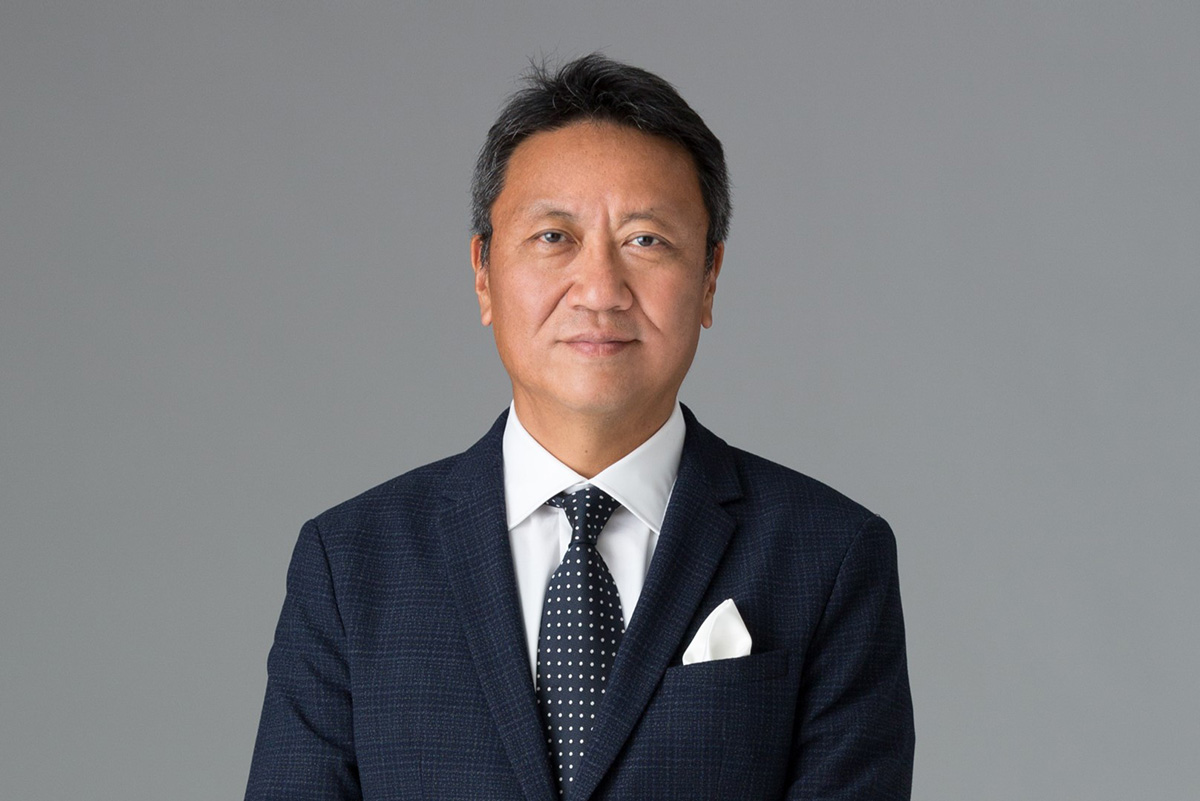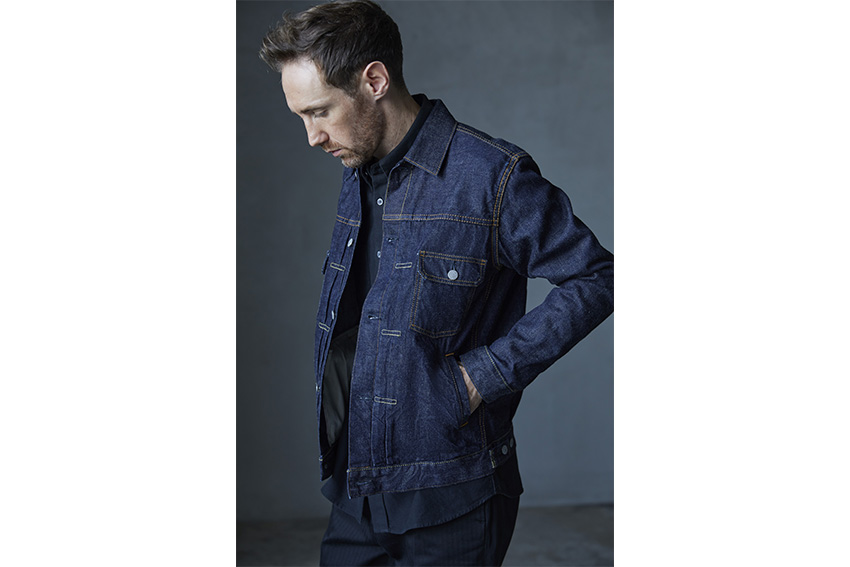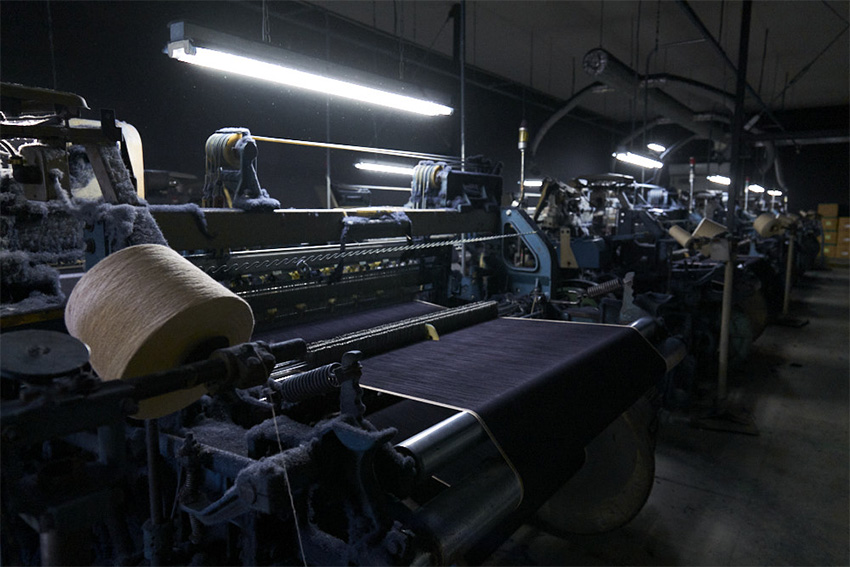In this interview with Naobumi Karita, President of Japan Blue, delves into the ethos behind the renowned brands "Momotaro Jeans" and "Japan Blue Jeans." Karita shares insights into the core strengths of the brands, emphasizing a manufacturing philosophy grounded in traditional hand-dyeing and weaving techniques. The discussion highlights the significance of staying true to the essence of craftsmanship while evolving the brands for a global audience through rebranding. Karita envisions an enriched in-store experience and emphasizes the importance of a compelling brand story in capturing international markets. Discover how Japan Blue aims to distinguish itself from major denim brands, leveraging its unique heritage, and weaving a compelling narrative for sustainable growth amidst industry challenges.

First of all, let me introduce a little bit about Japan Blue Co. and Momotaro Jeans. What do you think are the core strengths of both brands?
Let me introduce ourselves, we have two clothing brands called "Momotaro Jeans" and "Japan Blue Jeans". In this interview, I would like to focus on "Momotaro Jeans" this time. The core of our company is that we have a small but in-house production system of traditional hand-dyeing, hand-weaving, and sewing on old power looms. Since we can communicate our desired quality and design directly to our partner factories, we can realize them. However, we would like you to understand that we are not a stand-alone company, but a business that depends on our partner factories.
From my perspective, I would like to talk about an important aspect of ”Monodukuri” (manufacturing).
Firstly, that is a brand should never come before the facts. There is a fact that the spirit and history of craftspeople have been passed down in Kojima, Okayama, and our quality and brand are based on these facts. That is what Momotaro Jeans and Japan Blue Jeans are. In other words, we believe that a brand must be born from the facts.
In the future, of course, our approach to manufacturing will not change, but we hope to continue to refine the traditions that have been passed down to us. If I had to describe my strategy in one word, it would be “Denim Maison”. The important message I would like to convey today is that I want to enhance this brand and evolve it in the future.
We therefore are planning to rebrand ourselves for next summer.
Momotaro Jeans has thankfully been supported by hard-core fans from its establishment until today. From now on, we intend to work on a basic strategy of broadening our customer base while maintaining our hard-core fans. We would also like to share our newly evolved Momotaro Jeans with people around the world.

Momotaro jeans
Since the COVID-19 craze, we have witnessed the rise of the e-commerce channel. Whereas before, consumers used to visit stores and view products when purchasing premium brands, this is no longer the case, which is why many brands are trying to reimagine the in-store experience online. This is all to provide consumers with a new experience and give them a reason to return to their physical stores. What kind of consumer and in-store experiences do you hope to provide through these flagship stores?
A Jeans sommelier will welcome visitors to the store, tell them the story of the brand and our manufacturing background, and let them touch and feel the fabrics.
We hope to make a place "一期一会, once-in-a-lifetime experience" like they can find their pair of jeans.
As for EC, I think it is very difficult for first-time customers to purchase products from an online store, because of the need to hem due to the feature of jeans. Therefore, even if we could create a system, we believe that we would not expect to see an explosion of sales on the EC site.
However, if a customer has purchased our products before, he/she can tell us the length when ordering to ensure smooth delivery.
In other words, we have a hypothesis that it would be difficult for customers to purchase through EC unless they have a certain level of understanding of our products and jeans, so we would like them to come to our store and make a purchase based on their experience to be convinced. We believe that many of our customers are willing to visit our actual stores because they can receive these kinds of services.
Recently, we have also seen an increase in the number of inbound customers visiting our stores. At our Aoyama store in Tokyo, about 65% are inbound customers. We want to be the first choice brand and store for foreign visitors when they come to Japan. Whether it is for sightseeing or business, we would like them to stop by Momotaro Jeans stores.
We also have cross-border e-commerce for overseas customers, but the sales are still really small. Our goal is to have international customers become repeat customers through our website after they go home with their experiences at our stores in home with their experiences at our stores in Japan.
I believe that the way to expand sales in the future is to communicate this brand story well and create core fans who will pick up the products and introduce them to their acquaintances.

Weaving machine
You mentioned that you want to be the global leader in denim products, but you have competitors like Levi's and G-Star Lowe. How can you differentiate yourself from these giants and surpass them in the global market?
First, let me be clear: I don't necessarily want to be a global leader. We don't intend to compete with major companies, so perhaps "niche" is a better word.
To rephrase your question: You are not the only premium denim brand in the global market. How will you differentiate yourself and your offerings compared to these brands?
Ideally, we would like to target customers who do not wear major jeans brands. I think the keyword here is "sophisticated basics."
We are thinking of producing a signature line in the future. We want to convey our background as the foundation and fact of our craftspersonship, that is why jeans are hand-dyed, hand-woven, and hand-sewn. And we believe that these will be the stories that will encourage more fashion-savvy customers.
For this reason, we believe we must preserve our tradition and quality. The brand must be based on facts in the workshops that our artisans are dealing with, not just for branding purposes. We hope to do so, but here are the challenges.
To get more customers to buy our products, we need to supply more products. To do so, we must make our manufacturing capacity stronger. Our business is based in the local community, where many stakeholders support manufacturing. We are committed to working with them to expand our scale while maintaining the fact of manufacturing.
This sounds like an enormous challenge. The type of craftsmen you are talking about utilizes shuttle looms and certain weaving techniques, something that can only come from a skilled operator. Japan today, specifically when we talk about regional areas, has a huge demographic problem, and it is becoming harder and harder to find skilled operators for these types of machines due to the aging workforce. How do you plan on mitigating these issues considering the made-in-Japan ethos is so important to your brand and messaging?
There is nothing we can do about the declining birthrate and population, so there is a limit to the manufacturing industry.
We have local partner factories, and each factory has a certain number of craftspeople. They, too, are constantly thinking about how to distribute the work among them and keep them going.
However, I believe that they are truly world-class techniques.
That is why it is our job to communicate how much value the products have against the backdrop of the manufacturing facts I mentioned earlier.
And, of course, our partner factories are indispensable to us as well, so we would like to develop our partner factories daily while communicating our vision and engaging in friendly competition.
In the future, we would also like to expand our partners outside of Okayama Prefecture. This is because we believe that if we want to innovate our products, we should not only pull up traditional methods of making them but also look for partners who have different skills.
From the above, we must maintain sustainable relationships with the partners we already do business with and new future partners.
Japan’s denim story is quite a unique one because Japan is a latecomer in the market whereas historical brands like Levi’s for example are more than 100 years old. The first Japanese jeans were made in 1974 by Big John with the M-Series. However, in the span of just 10-20 years, Japanese denim became seen as a real symbol of quality, and your core brand of Momotaro Jeans is a fantastic example of that. How do you explain Japan’s ability to attain this reputation for quality despite being a latecomer? How important is it to your brand to keep that made-in-Japan spirit for the rebranding story?
We are certainly a latecomer to the jeans market. However, Japan has a unique dyeing technique called aizome, which has been passed down since the Edo period. Aizome is one of the most beautiful dyeing techniques in the world, and the technique has been passed down to the present day.
Jeans introduced from the U.S. are also dyed with indigo dye, and like aizome, I believe they are close in the sense that they are dyed blue. Momotaro Jeans has been producing products of aizome and will continue to do so in the future. In this sense, I think we would say that we are not a latecomer.
Another key element of the denim industry is weaving technology. In Okayama, the textile industry has been active since the Edo period (1603-1868), weaving thick fabrics such as canvas, tabi socks, and kumi-himo (braided cords). Then in Japan, after the Meiji Restoration, the textile industry including Kurashiki Spinning was promoted to revitalize. in the Showa period (1926-1989), jeans were introduced from the U.S., and Okayama attracted attention because of the need for machines and craftspeople who could handle thicker yarns and thicker fabrics.
Later, fabrics woven in Okayama were introduced overseas, where they were praised for their weaving techniques, product beauty, and quality. As a result, the demand for denim from Okayama and other areas in the Setouchi region has been growing both domestically and internationally today.
Next summer, we would love you to see what we have done in terms of our rebranding. We hope you will see that we have done an amazing evolution from the design and interior design of our stores and all of our products. And there you will see a great leap forward as a brand.
For more details, explore their website at https://www.japanblue.co.jp
0 COMMENTS